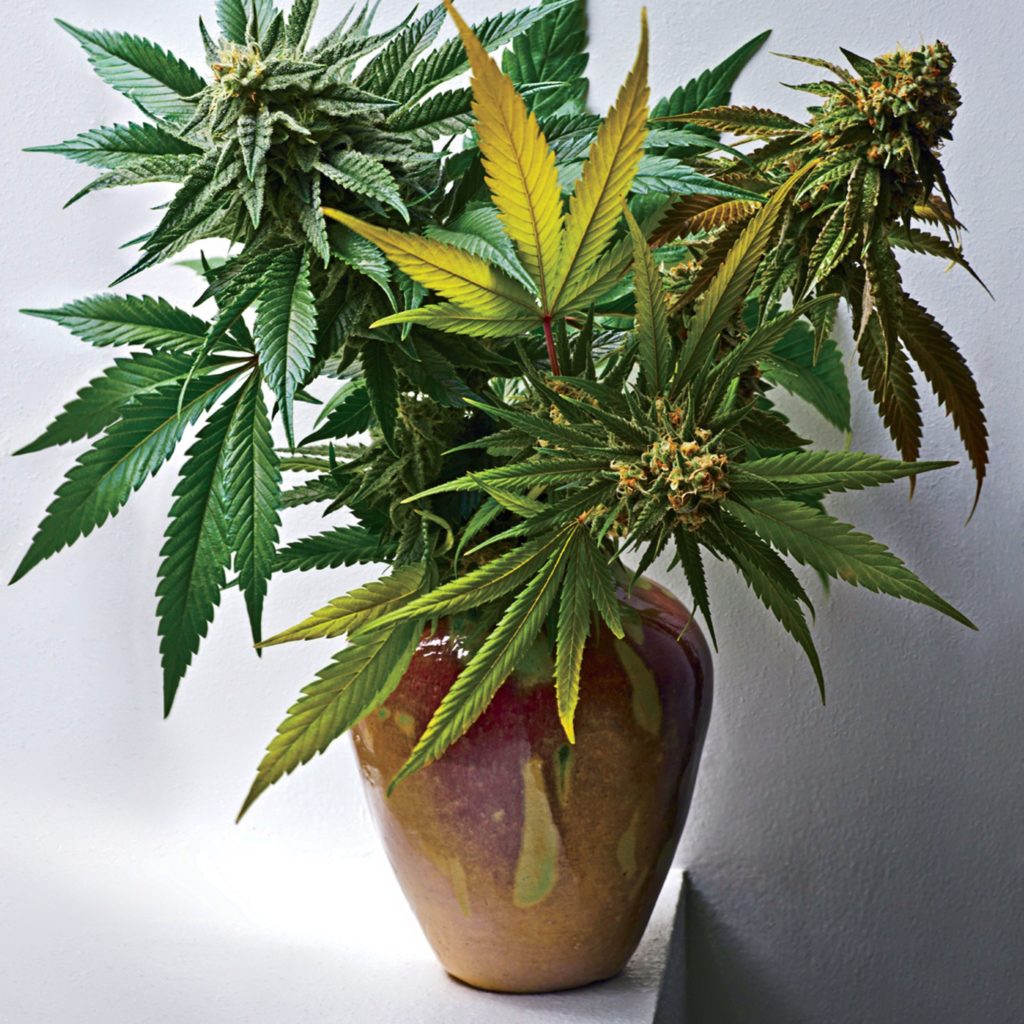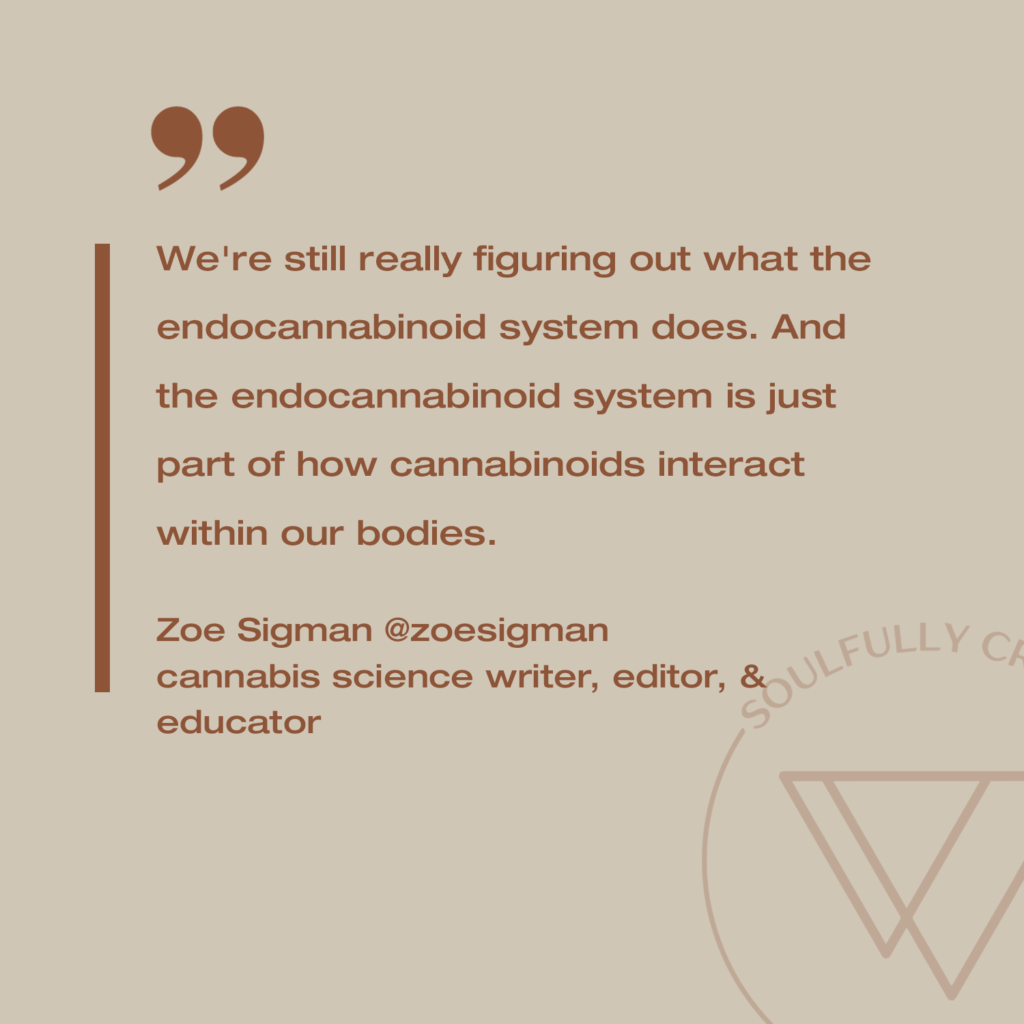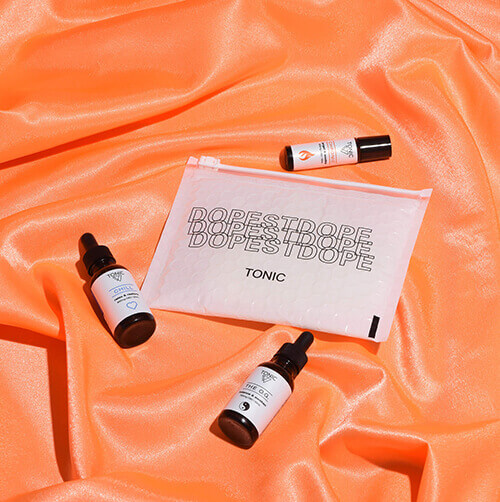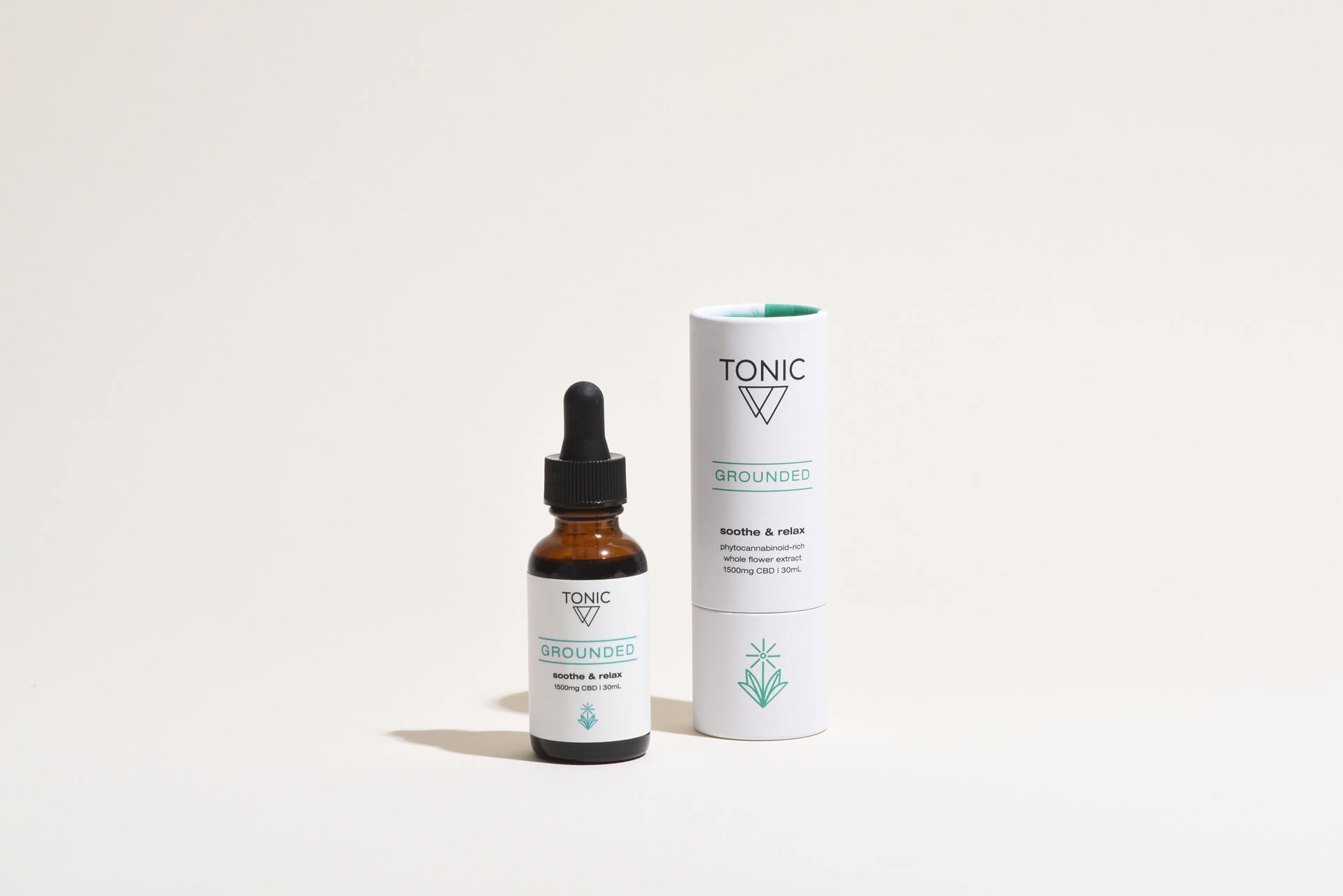The Science Behind CBD with Zoe Sigman
Zoe Sigman is a cannabis science writer, editor, and educator. She is Broccoli Magazine’s Science Editor and previously served as Program Director for Project CBD. She’s testified about CBD and cannabis regulation to the Federal Drug Administration (FDA) and regularly speaks about cannabis and cannabis science to patients, medical professionals, and consumers.
Understanding the endocannabinoid system
Zoe Sigman:
There are still a lot of people that have no idea that we have an endocannabinoid system. Even on the West Coast and in Oregon, where there are high concentrations of cannabis educators, many consumers don’t realize how the products they’re using interact with their bodies. There have been huge advances in the scientific understanding of this plant over the past ten years. There is a massive gap in communicating that information to consumers. The interest is there and now people want to find the resources. Unfortunately, there aren’t many great resources available.
The passion behind the plant
Tia:
How did become so passionate about the plant?
Zoe Sigman:
I was applying to Ph.D. programs in Sociology focusing on carceral reform, and I needed a job. A dear friend of mine was the general manager at a dispensary, Farma in Portland, OR, and got me an interview there. I was immediately put into budtender training Including a day about the science of cannabis. After the science day I was like, “Okay, we have an endocannabinoid system. And that means that there are receptors that do things. What’s a receptor? What’s a cell? What are the nerves?” It inspired a journey down a deep rabbit hole of understanding physiology and biology in relation to cannabis.
Immediately I was approached by people with serious chronic illnesses. It wasn’t unusual for a customer to come in and say, “Hey, I have cancer. Cure me”. And you’re like, “Hi, I make $12 an hour, and it sucks that your doctor can’t help you.” t put me in a position of desperately wanting to help all of these people that have any other options. Which presented a problem: it’s illegal to give medical advice without a medical license. Which is a great law but one that budtenders have to face daily. It’s an impossible situation.
A lot of scientists and doctors like to criticize budtenders for giving medical advice. And it is not the bartender’s fault that they’re put in this position. They are trying their best. The way that I decided to help these people was to research the heck out of their conditions and the ways in which scientific literature supported (or denounced) the use of cannabis in dealing with those conditions. That way I could say “I can’t tell you what to do.” What I can do is research your condition and give you an overview of what science has to say. Then I can explain exactly how scientific research works, like, ‘this is what it means that this is done on mice, and this is what is promising…this is maybe what you can try and this is what you should talk to about with your doctor’ and things like that. And I just started accruing all of that information.

Understanding medical claims in cannabis
Tia:
That’s a really important subject because when it comes to these medical claims, it’s fascinating what you cannot say about this plant.
Zoe Sigman:
We don’t even know dosages for CBD. There’s much we don’t know. We know dosages for isolate CBD for pediatric epilepsy and that’s it. It’s hard in the U.S. because research is so limited due to cannabis legal status. One of the issues with CBD is that there haven’t been great pharmacokinetic studies, which is the movement of the drug throughout your body, and without that sort of information, it’s difficult to come up with dosages.
Even in the epilepsy studies present challenges regarding interpreting dosing. These kids are on some really serious anti-epilepsy medications that have interactions with CBD. And they’re really sick. It’s like, yes, those kids are taking massive doses. Are those dosages necessary for other conditions? We don’t know because of the way that Western medical science works are through clinical trials. Clinical trials examining cannabis are really difficult to pursue in the US because cannabis is still federally illegal. Those clinical trials are necessary to determine dosages for different conditions.
Even given the difficulty in studying cannabis in the US, there are scientists and doctors who are looking at the effects of cannabinoids through observational studies – studies that record a patient’s subjective experience of using cannabis without a prescription. Those have been really useful. I know Dr. Stacy Gruber at Harvard is performing a clinical trial for CBD in anxiety. That trial uses 30 milligrams of CBD and 0.3 milligrams of THC. It’s had promising results with the caveat that she’s only looked at 10 people so far. There are still some really big questions about dosage.
Doctors who work with cannabis regularly have yet another perspective to offer. For some of their patients, 10 milligrams work and for others, with exactly the same condition and circumstances it takes 400 milligrams to be effective. We don’t know why but it’s something important to consider as consumers experiment with cannabis and CBD.
We’re in this weird place right now where we have some evidence from trials and anecdotes that cannabis can be effective for a huge variety of diseases and conditions. But actually like narrowing that down and being able to give recommendations to people beyond the basics is very difficult.

What’s missing when it comes to research?
Tia:
What would you say are the factors that we’re missing in these studies? What other prescription medications are you taking? What are people missing when it comes to this research and experimentation?
Zoe Sigman:
Yeah, I mean, that’s a big part of it. The pharmacodynamics (PD) and pharmacokinetics (PK), which is how your body absorbs a drug and how it moves through your body. Those are things that we still very much need for CBD. We have more of that research for THC. It’s kind of crazy that we don’t have PK/PD information because that’s usually one of the first things that new drugs establish. Cannabis isn’t being developed or treated like new pharmaceutical research has been evolving backward.
We do really need to know how these compounds interact with other drugs. We learned a little bit about that in the Epidiolex study, but again, those dosages were really high. Would we see the same interactions at lower dosages? We don’t know. One of my former colleagues, Adrian Devitt-Lee, wrote an incredibly useful Cannabis drug interaction guide. It’s based on studies that have examined the metabolization of cannabinoids but it’s all theoretical. These studies were conducted in subcultures and rodents, not in humans. It’s like, okay, well you look at THC and CBD and they’re broken down by the CYP family of enzymes. The CYP family of enzymes breaks down 60 to 70% of other pharmaceutical drugs. The potential for cannabis to impact the metabolism of other drugs could be high, but we don’t know at what dosage. We need to figure that out.
Another complicated facet of cannabis medicine is related to how Western science usually approaches developing drugs: it’s all about one compound, for one target, for one condition. Both THC and CBD have many, many, many molecular targets in our body. So it’s not simple.
For example, if activating CB2 is the goal, but not CB1 because its activation could negate the positive effects of activating CB2, then you can’t use THC. THC activates both of those receptors. You can’t pick and choose (though scientists are doggedly working on discovering compounds that only activate CB2). There are also downstream effects. Which means THC isn’t just activating CB1 and CB2, but a whole slew of other receptors. And not only that but also impacting a bunch of other systems throughout the body. It’s much more complicated than the standard pharmaceutical, drug development chain is designed to work with.
We have all these insights that suggest how useful cannabis could be for a huge spectrum of conditions, including many that don’t have any treatments yet. We don’t know the whole picture yet. We’re still really figuring out what the endocannabinoid system does. And the endocannabinoid system is just part of how cannabinoids interact within our bodies.


 The Steady Supply
The Steady Supply

 Personalized Vibes
Personalized Vibes
